Mark Twain Trail Quote of the Day – Tuesday – November 23, 2021
“It is hard to make railroading pleasant in any country. It is too tedious. Stage-coaching is infinitely more delightful.” Mark Twain, The Innocents Abroad, 1869
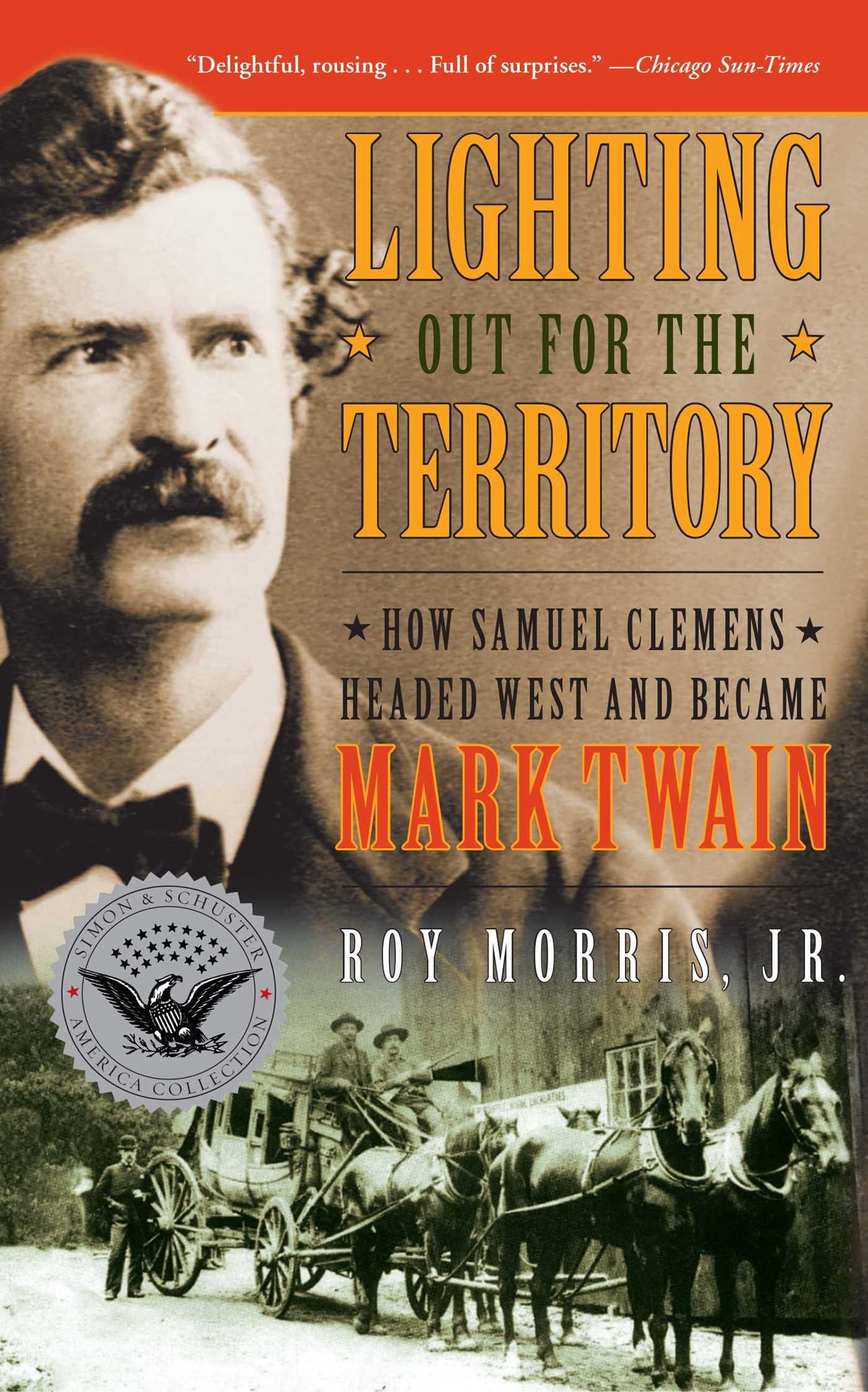
"To Wander, To Learn, To Dream, To Build"
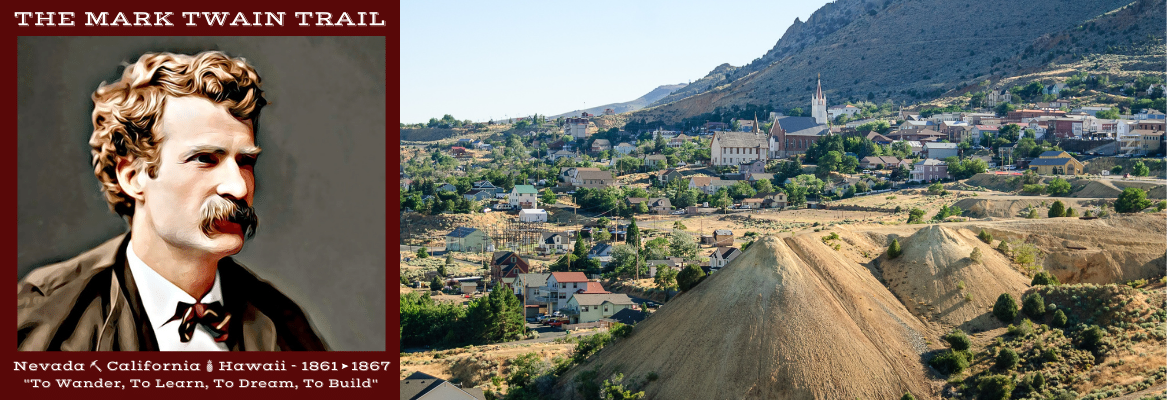
“It is hard to make railroading pleasant in any country. It is too tedious. Stage-coaching is infinitely more delightful.” Mark Twain, The Innocents Abroad, 1869

“Three months at Lake Tahoe would restore an Egyptian mummy to his pristine vigor. I do not mean the oldest and driest mummies, of course, but the fresher ones.” Mark Twain, Roughing It, 1872
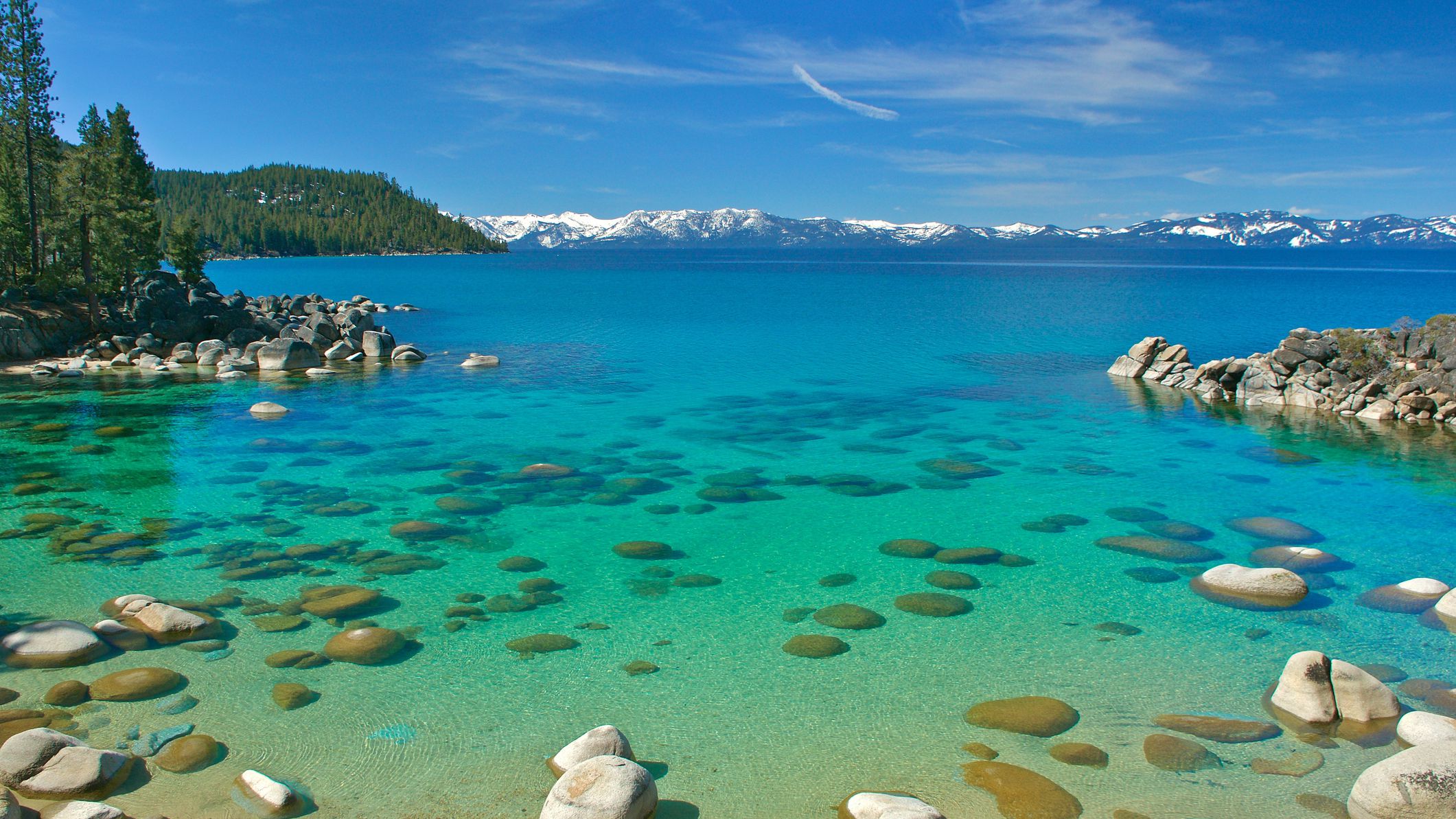
“Nothing helps scenery like ham and eggs. Ham and eggs, and after these a pipe – an old, rank, delicious pipe – ham and eggs and scenery, a “down grade,” a flying coach, a fragrant pipe and and a contented heart – these make happiness. It is what all the ages have struggled for.” Mark Twain, Roughing It, 1872
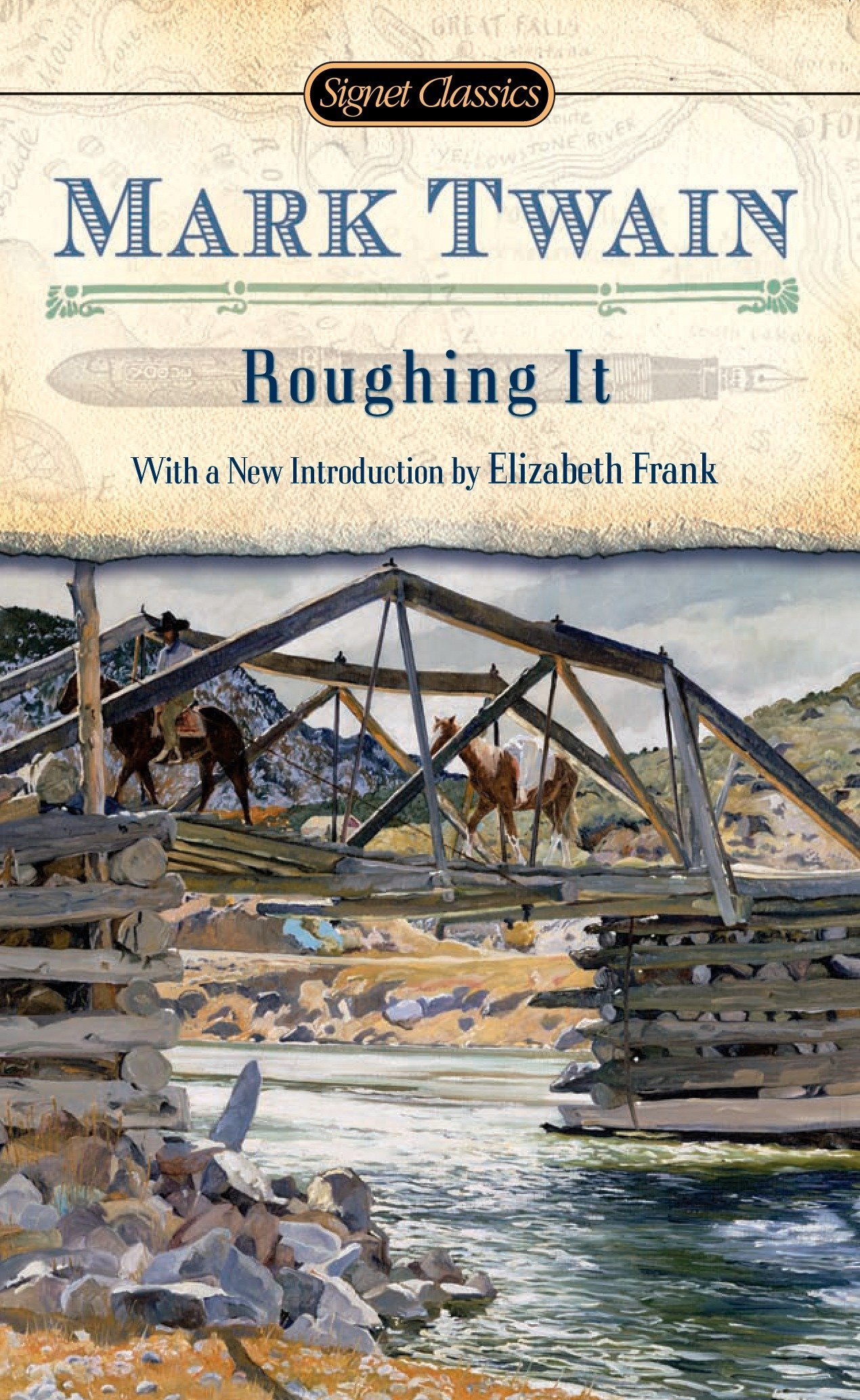
“Necessity is the mother of taking chances.” Mark Twain, Roughing It, 1872
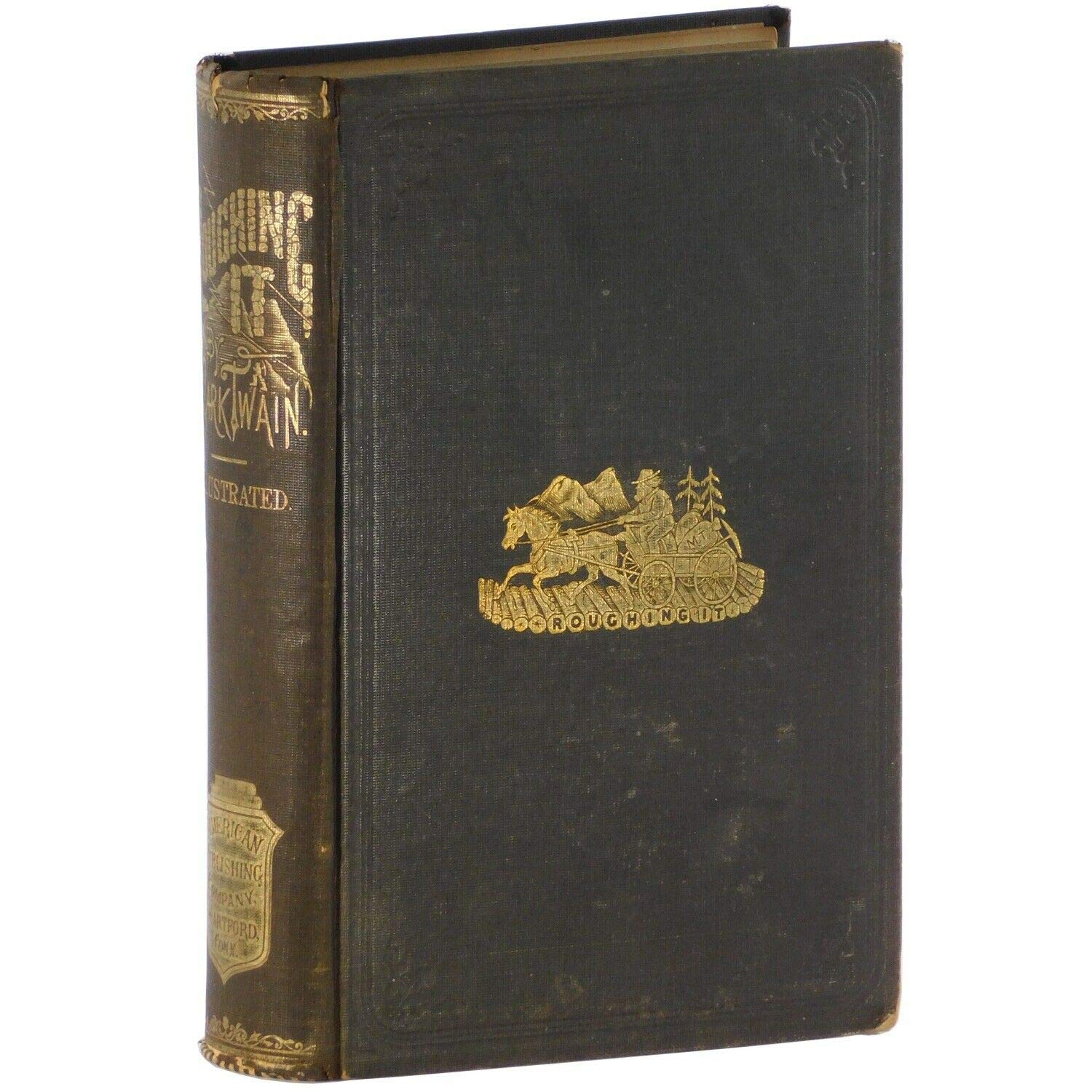
“Change is the handmaiden Nature requires to do her miracles with.” Mark Twain, Roughing It, 1872
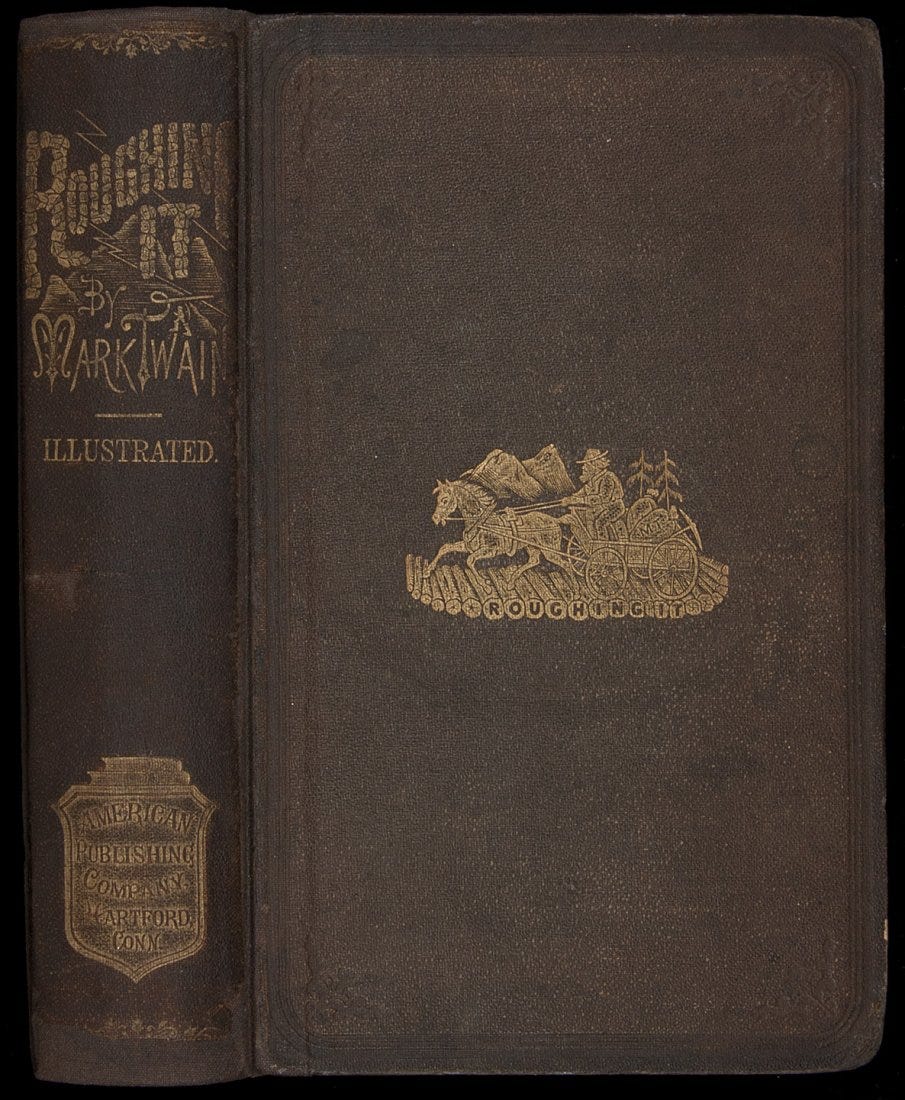
“Mark Twain, though he did not go for spiritualism or immortality, would have agreed that siblings could tune into each other from opposite sides of the ocean. He believed, he once wrote, that a mind “still inhabiting the flesh” could reach another mind at great remove. There was an inciting incident in the spring of 1875 (before Twain’s red hair went gray), which he recollected as “the oddest thing that ever happened to me.”
The mail had just come at Twain’s home in Hartford, and he held a fat letter, still sealed. “Now I will do a miracle,” he drawled. He recognized the hand of someone from whom he said he hadn’t heard in eleven years. Even so, he knew without opening it that the letter contained a book idea. Their minds had been “in close and crystal-clear communication with each other across three thousand miles of mountain and desert on the morning of the 2nd of March.” Twain, in effect, had sat down to write to this very contact, on the same day, about this very same idea. Twain answered: “Dear Dan—Wonders never will cease.””
Chantel Tarroli, Mark Twain’s Mind Waves, The Paris Review

“If the reader thinks he is done, now, and that this book has no moral to it, he is in error. The moral of it is this: If you are of any account, stay at home and make your way by faithful diligence; but if you are “no account,” go away from home, and then you will *have* to work, whether you want to or not. Thus you become a blessing to your friends by ceasing to be a nuisance to them – if the people you go among suffer by the operation.” Mark Twain, Roughing It, 1872
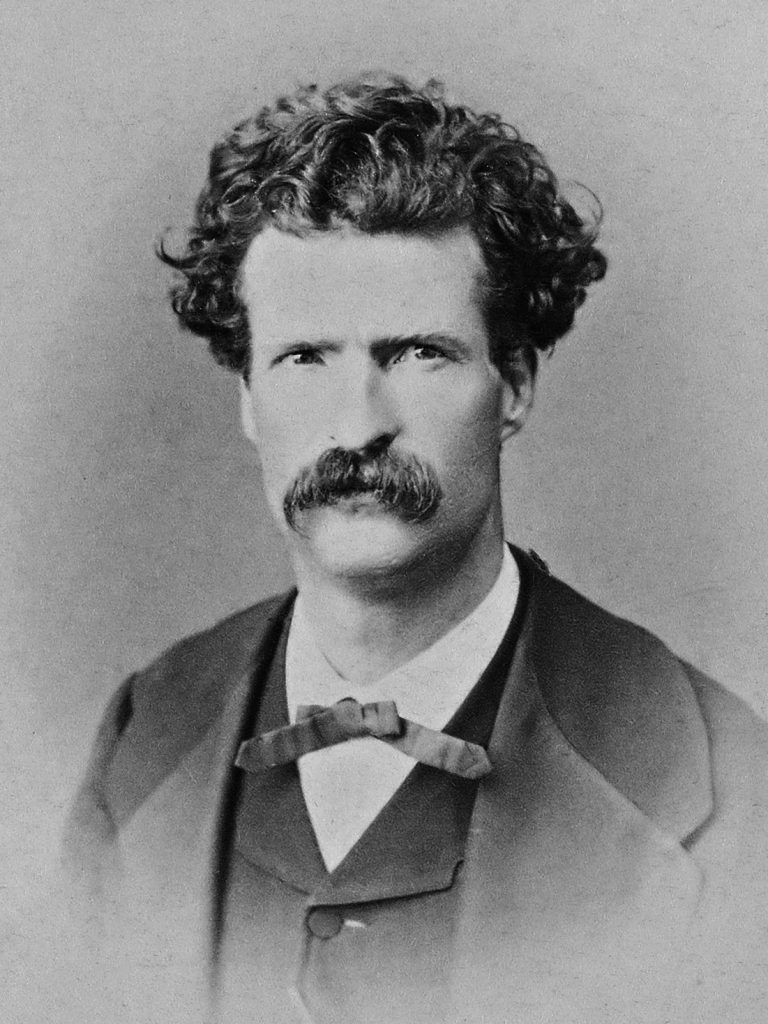

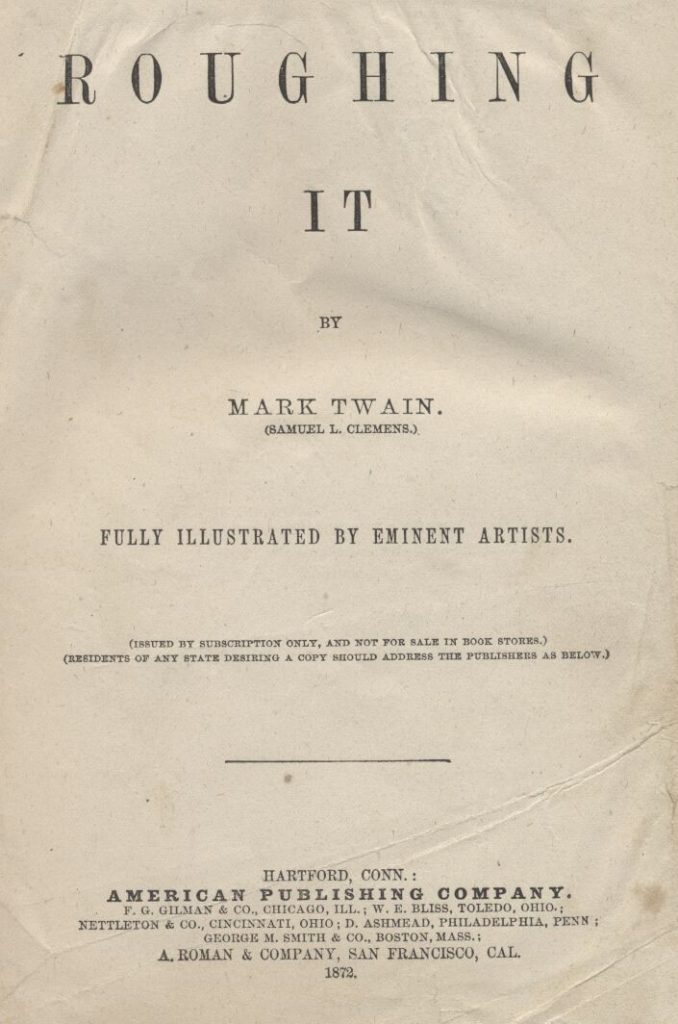
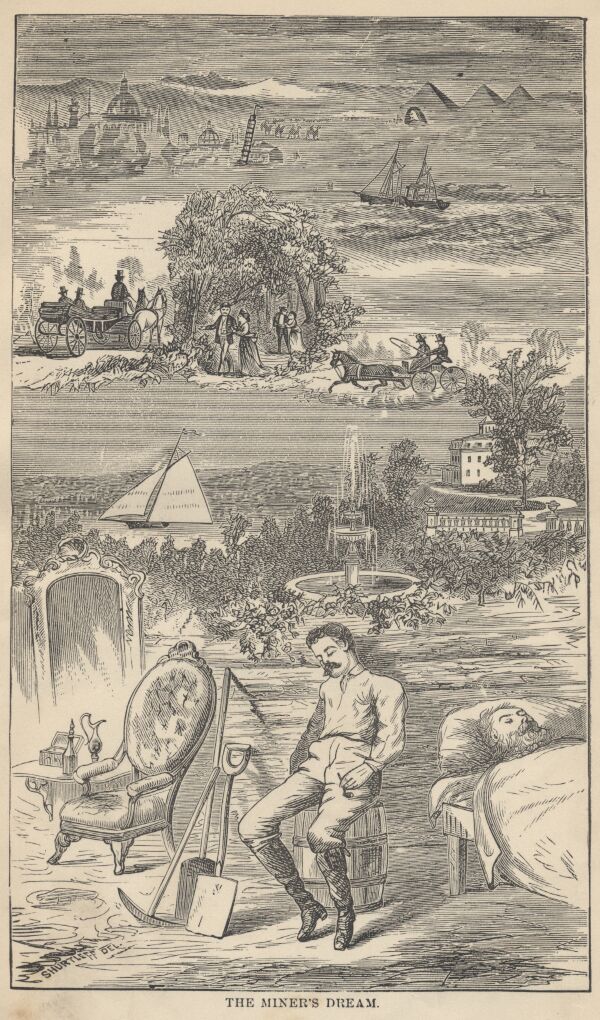
For all the recognition that Mark Twain receives as America’s first, and some would say greatest American novelist, a theme that flows through all of Twain’s work is travel and movement and all that travel led to Mark Twain writing some of America’s greatest travel books, including:
The Innocents Abroad, 1869, Mark Twain in Europe on a Boat
Roughing It, 1872, Mark Twain in the American West
A Tramp Abroad, 1880, Mark Twain in Europe on Foot
Life on the Mississippi, 1883, Mark Twain on a Boat on the Mississippi River
Following the Equator, 1897, Mark Twain circling the world on a Boat
In A Tramp Abroad (1880), especially the Blackstone Publishing Audio Version, one gets a sense of Mark Twain at a time when he was struggling to see what direction his writing career was headed between his two most famous novels, The Adventures of Tom Sawyer (1876) and The Adventures of Huckleberry Finn (1884), something Ben Crair touches on in a piece on Mark Twain’s walking Europe that led to A Tramp Abroad for the New York Times in 2016:
Mark Twain Found Inspiration in Germany (Though Not German), Ben Crair, New York Times
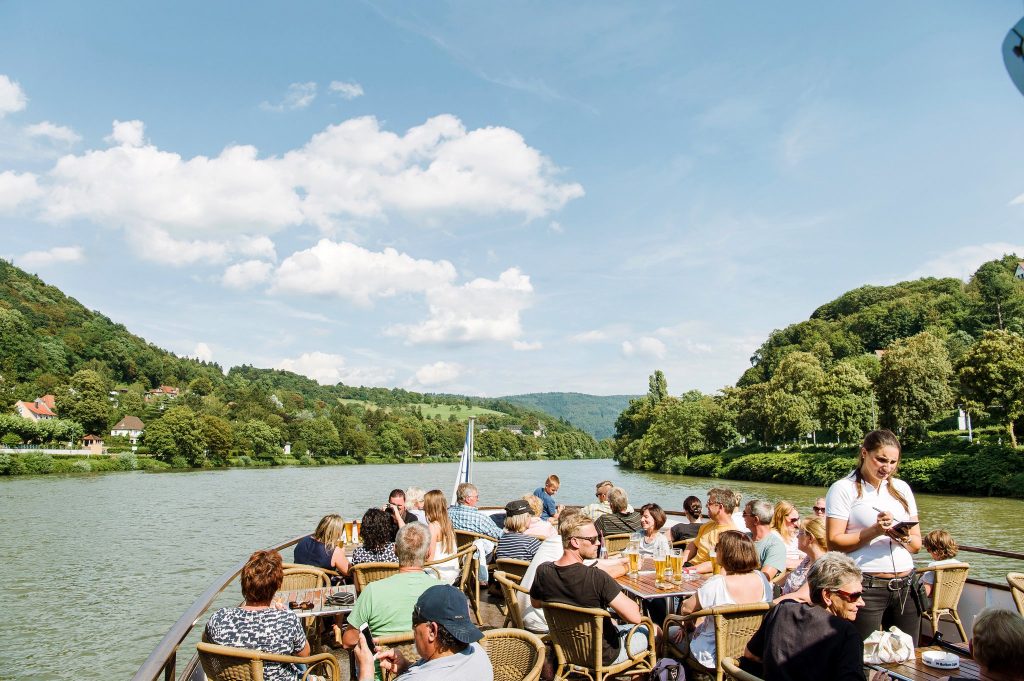
“When Twain arrived in Germany, his writer’s block had hamstrung not only “Huckleberry Finn” but also several other books, including “Life on the Mississippi” and “The Prince and the Pauper.” And he had humiliated himself in December 1877 with an irreverent speech in Boston before some of America’s greatest literary figures: Ralph Waldo Emerson, Henry Wadsworth Longfellow and Oliver Wendell Holmes. “I feel that my misfortune has injured me all over the country,” he wrote to a friend. He told his mother that he needed to “fly to some little corner of Europe.”
I arrived in Heidelberg in June with some sense of Twain’s restlessness. When I told a friend that I was having trouble concentrating, he said I should stay present: open my senses to whatever was happening at the moment, and exist in the world instead of in my head. As I reread “A Tramp Abroad,” knowing that Twain had arrived in Germany under a cloud of shame and failure, it seemed to me that he had faced a similar challenge. His goal was not so much to penetrate Heidelberg and the Neckar Valley but to soak his senses in those places, to dissolve his insecurity in the scenery and to rediscover his pride and purpose.
This comes through clearest in Twain’s Neckar narrative, so I followed him upriver. From Heidelberg, I took a boat to Neckarsteinach, an old town with a quartet of castle ruins. The river winds between hills like a lazy cursive signature. Time has worked slowly on its banks: The terrain is still mainly field and forest; the mountains robed in thick green foliage. Every few miles our boat passed a village with bored-looking teenagers and rows of simple white homes. After sundown, the buildings glowed like votive candles in the dark.
The inns where Twain stayed along the Neckar have closed, but some of his favorite castle ruins are now connected with hotels. Burg Hornberg is a mountaintop fortress surrounded by terraced vineyards, with a tower so high that surely, at some point, someone must have locked a princess in it. The hotel’s impressive view of the Neckar is marred only slightly by an industrial plant.
Farther downstream, you can stay at the Schlosshotel Hirschhorn, whose ruins were one of Twain’s favorite Neckar sights. “The clustered brown towers perched on the green hilltop, and the old battlemented stone wall, stretching up and over the grassy ridge and disappearing in the leafy sea beyond, make a picture whose grace and beauty entirely satisfy the eye,” he wrote in “A Tramp Abroad.””
Maybe indeed it was Mark Twain’s trip to Europe in 1879 and subsequent book A Tramp Abroad that led to Twain diving back into The Adventures of Huckleberry Finn, but let us linger for a moment on a hilarious chapter from A Tramp Abroad, A Trip To Rigi, that has Twain and his traveling companion “Harris” in the Lucerne/Weggis, Switzerland area (a place that Twain and his family came to love) climbing the Rigi-Kulm Alpine mass >
A Trip To Rigi, A Tramp Abroad, (Marc Twain 1879)

“The Rigi-Kulm is an imposing Alpine mass, six thousand feet high, which stands by itself, and commands a mighty prospect of blue lakes, green valleys, and snowy mountains–a compact and magnificent picture three hundred miles in circumference. The ascent is made by rail, or horseback, or on foot, as one may prefer. I and my agent panoplied ourselves in walking-costume, one bright morning, and started down the lake on the steamboat; we got ashore at the village of Waeggis;
three-quarters of an hour distant from Lucerne. This village is at the foot of the mountain.
We were soon tramping leisurely up the leafy mule-path, and then the talk began to flow, as usual. It was twelve o’clock noon, and a breezy, cloudless day; the ascent was gradual, and the glimpses, from under the curtaining boughs, of blue water, and tiny sailboats, and beetling cliffs, were as charming as glimpses of dreamland. All the circumstances were perfect–and the anticipations, too, for we should soon be enjoying, for the first time, that wonderful spectacle, an Alpine sunrise–the object of our journey. There was (apparently) no real need for hurry, for the guide-book made the walking-distance from Waeggis to the summit only three hours and a quarter. I say “apparently,” because the guide-book had already fooled us once–about the distance from Allerheiligen to Oppenau–and for aught I knew it might be getting ready to fool us again. We were only certain as to the altitudes–we calculated to find out for ourselves how many hours it is from the bottom to the top. The summit is six thousand feet above the sea, but only forty-five hundred feet above the lake. When we had walked half an hour, we were fairly into the swing and humor of the undertaking, so we cleared for action; that is to say, we got a boy whom we met to carry our alpenstocks and satchels and overcoats and things for us; that left
us free for business. I suppose we must have stopped oftener to stretch out on the grass in the shade and take a bit of a smoke than this boy was used to, for presently he asked if it had been our idea to hire him by the job, or by the year? We told him he could move along if he was in a hurry. He said he wasn’t in such a very particular hurry, but he wanted to get to the top while he was young. We told him to clear out, then, and leave the things at the uppermost hotel and say we should be
along presently. He said he would secure us a hotel if he could, but if they were all full he would ask them to build another one and hurry up and get the paint and plaster dry against we arrived. Still gently chaffing us, he pushed ahead, up the trail, and soon disappeared. By six o’clock we were pretty high up in the air, and the view of lake and mountains had greatly grown in breadth and interest. We halted awhile at a little public house, where we had bread and cheese and a quart or
two of fresh milk, out on the porch, with the big panorama all before us–and then moved on again.
Ten minutes afterward we met a hot, red-faced man plunging down the mountain, making mighty strides, swinging his alpenstock ahead of him, and taking a grip on the ground with its iron point to support these big strides. He stopped, fanned himself with his hat, swabbed the perspiration from his face and neck with a red handkerchief, panted a moment or two, and asked how far to Waeggis. I said three hours. He looked surprised, and said: “Why, it seems as if I could toss a biscuit into the lake from here, it’s so close by. Is that an inn, there?”
I said it was.
“Well,” said he, “I can’t stand another three hours, I’ve had enough today; I’ll take a bed there.”
I asked:
“Are we nearly to the top?”
“Nearly to the TOP? Why, bless your soul, you haven’t really started, yet.”
I said we would put up at the inn, too. So we turned back and ordered a hot supper, and had quite a jolly evening of it with this Englishman.”

The rest of the A Trip To Rigi chapter is just as entertaining and it’s not hard to imagine climbing Rigi-Kulm with Twain and Harris and laughing all the way up and all the way down, which was on a steep train back down that is well worth your time later in the same chapter!
A Trip To Rigi, A Tramp Abroad, (Marc Twain 1879)
A couple more New York Times recent pieces on Mark Twain’s travels are….
Twain’s Nicaragua,144 Years Later, Freda Moon, New York Times, September 16, 2010
Mark Twain’s Hawaii, Lawrence Downes, New York Times, May 14, 2006

….and the below excerpt from Downes piece of Twain in Hawaii, which was included in his book Roughing It, is an observation that one often hears when they read Twain’s travelogues on how well Twain’s writing holds up even 100+ years later >
“Hawaii has seen its share of famous storytellers. Robert Louis Stevenson, Jack London and Herman Melville passed through on their way to other frontiers. But what little they wrote about Hawaii was fictionalized, heavily metaphorical and is now mostly forgotten. James Michener, on the other hand, wrote way too much: His 1959 novel “Hawaii” covers nearly the whole thing, from the volcanoes to the missionaries, a span of 40 million years, or maybe pages, it’s hard to tell. (“And then one day,” one typically fizzy passage goes, “at the northwest end of the subocean rupture, an eruption of liquid rock occurred that was different from any others.”)
That book is a brick, and so is the movie, even if it does have Julie Andrews, that pearly shell, playing a missionary’s wife. Neither is what you want if you’re looking for something to enrich your visit.
What you want is Mark Twain.
Twain spent four months in the islands in 1866, when he was 31 and working on becoming famous. His 25 letters from the Sandwich Islands, written on assignment for The Sacramento Union, are still fresh and rudely funny after almost a century and a half — a foretaste of genius and the best travel writing about Hawaii, my home state, I have ever read.”

“Mark Twain stood on the deck of the Warrimo as O‘ahu came into view.
“On the seventh day out we saw a dim vast bulk standing up out of the wastes of the Pacific and knew that that spectral promontory was Diamond Head, a piece of this world which I had not seen before for twenty-nine years,” Twain wrote. “So we were nearing Honolulu, the capital city of the Sandwich Islands—those islands which to me were Paradise; a Paradise which I had been longing all those years to see again. Not any other thing in the world could have stirred me as the sight of that great rock did.”
The year was 1895. Twain was 69. We can imagine the great author and lecturer on deck—mop of white hair blowing in the trade winds, shaggy mustache drooping over his mouth, taking a couple puffs on one of the cigars that seemed to always be clamped between his teeth. It was sunset.
“The vast plain of the sea was marked off in bands of sharply-contrasted colors: great stretches of dark blue, others of purple, others of polished bronze; the billowy mountains showed all sorts of dainty browns and greens, blues and purples and blacks, and the rounded velvety backs of certain of them made one want to stroke them, as one would the sleek back of a cat.””
Mark Twain is yes indeed one of America’s greatest novelists, but his travel writing is a must as well for those that like Twain are energized by traveling, movement, and adventure which is at the heart of what The Mark Twain Trail is all about!
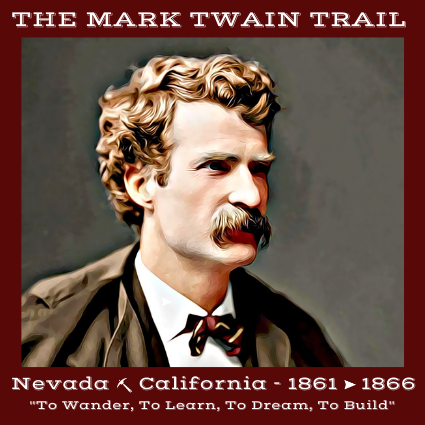
The Mark Twain Trail
3827 South Carson Street
Unit 505-25 #1022
Carson City, Nevada 89701
info@marktwaintrail.com
775 372 – 7200
One of the great impersonators of Mark Twain in the last few decades is McAvoy Layne who calls Incline Village, Nevada on the north shore of Lake Tahoe home. Layne has played Mark Twain on stage over 4,000 times and below is a video of one of those performances that McAvoy calls the “Ghost of Mark Twain” and a great performance it is!
In 2016 John Burke of the Las Vegas PBS program Outdoor Nevada caught up with McAvoy Layne at Lake Tahoe for “A Day with Mark Twain” which takes folks to Virginia City, Carson City, and the spot where Samuel Clemens first spotted Lake Tahoe on the eastside of the Lake. McAvoy Layne’s website is —–> www.ghostoftwain.com
Samuel Clemens and a friend hiked from Carson City to Lake Tahoe, a distance of 20-something miles, in August/September 1861 and spent two weeks at the Lake which Mark Twain later detailed in his book Roughing It >
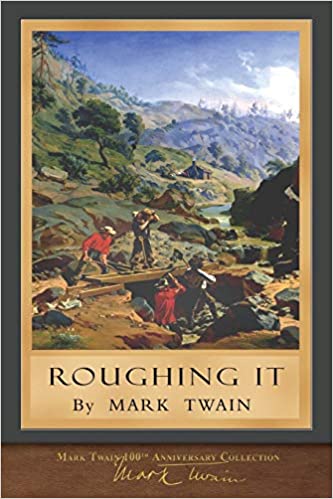
Roughing It – Chapter XXII – Lake Tahoe
“It was the end of August, and the skies were cloudless and the weather superb. In two or three weeks I had grown wonderfully fascinated with the curious new country and concluded to put off my return to “the States” awhile. I had grown well accustomed to wearing a damaged slouch hat, blue woolen shirt, and pants
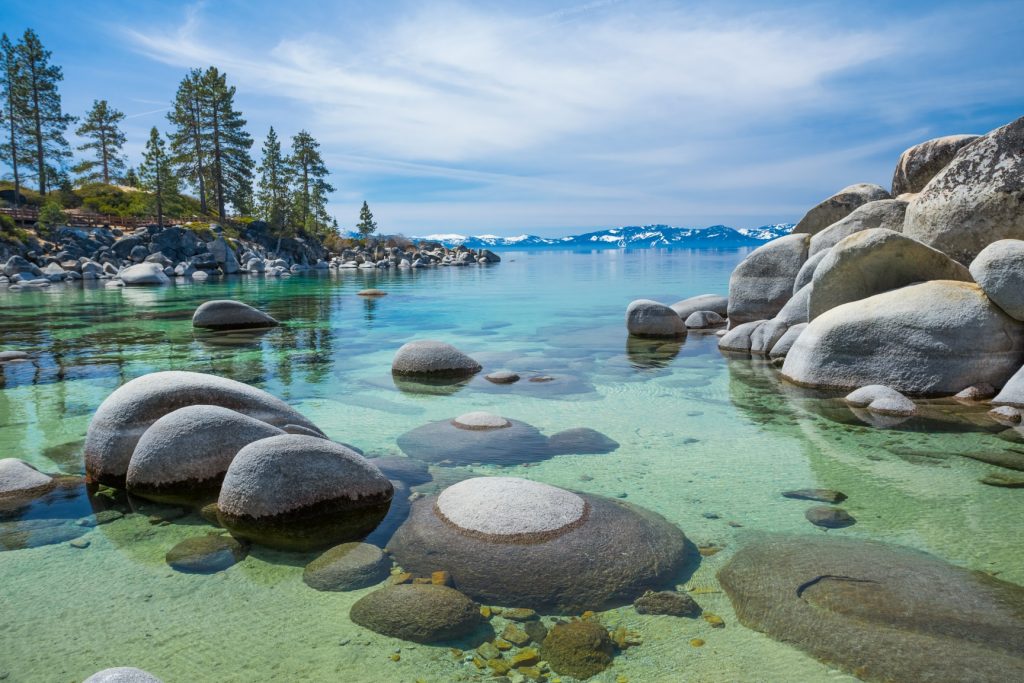
North Lake Tahoe, Nevada + California
crammed into boot-tops, and gloried in the absence of coat, vest and braces. I felt rowdyish and “bully,” (as the historian Josephus phrases it, in his fine chapter upon the destruction of the Temple). It seemed to me that nothing could be so fine and so romantic. I had become an officer of the government, but that was for mere sublimity. The office was an unique sinecure. I had nothing to do and no salary. I was private Secretary to his majesty the Secretary and there was not yet writing enough for two of us. So Johnny K——and I devoted our time to amusement. He was the young son of an Ohio nabob and was out there for recreation. He got it. We had heard a world of talk about the marvellous beauty of Lake Tahoe, and finally curiosity drove us thither to see it. Three or four members of the Brigade had been there and located some timber lands on its shores and stored up a quantity of provisions in their camp. We strapped a couple of blankets on our shoulders and took an axe apiece and started—for we intended to take up a wood ranch or so ourselves and become wealthy. We were on foot. The reader will find it advantageous to go horseback. We were told that the distance was eleven miles. We tramped a long time on level ground, and then toiled laboriously up a mountain about a thousand miles high and looked over. No lake there. We descended on the other side, crossed the valley and toiled up another mountain three or four thousand miles high, apparently, and looked over again. No lake yet. We sat down tired and perspiring, and hired a couple of Chinamen to curse those people who had beguiled us. Thus refreshed, we presently resumed the march with renewed vigor and determination. We plodded on, two or three hours longer, and at last the Lake burst upon us—a noble sheet of blue water lifted six thousand three hundred feet above the level of the sea, and walled in by a rim of snow-clad mountain peaks that towered aloft full three thousand feet higher still! It was a vast oval, and one would have to use up eighty or a hundred good miles in traveling around it. As it lay there with the shadows of the mountains brilliantly photographed upon its still surface I thought it must surely be the fairest picture the whole earth affords.”
There have been many movies and television shows made about Mark Twain, but perhaps the best is the film adaptation of Twain’s book Roughing It.
Released in 2002 starring James Garner as Old Mark Twain and Robin Dunne as Young Samuel Clemens it portrays Clemens during his years “lighting out for the territory” and in Nevada just before he became known as his chosen pen name of Mark Twain. If you have Amazon Prime it is included for free along with your membership and you can buy the movie below from Amazon.com. Below the Amazon.com link you will find videos of the Roughing It movie now available on YouTube.com, and as you watch this film adaptation of Roughing It keep in mind that it doesn’t follow precisely what Mark Twain wrote in Roughing It, but no one really believes that everything Twain wrote in Roughing It really happened! At the end of Part 2 of Roughing It at the end of speech that James Garner as Mark Twain is making to Twain’s daughter Suzi’s graduating college class is a quote that if it wasn’t said by Twain it certainly could and should have >
“So it was I found my calling. I took a long way to it I suppose but maybe that was the only way there was to it. It’s part of the mysterious adventure of your life. Cause that’s what it is…an adventure. Where things happen when you least expect them, and often while you are doing something entirely different. There are 1,440 minutes in every day, yours to use as you see fit. To wander, to learn, to waste, to build. We didn’t make this world, but maybe we can make it a little better than it was when we came into it. It’s all up to you. Be optimistic about yourself, about your talents, about your calling. Put all your eggs in one basket and watch that basket. So now before I embarrass my own daughter Suzi any further let me say finally. Congratulations on your graduation and good luck with your lives.”
It seems to us that Mark Twain would have loved the sentiments expressed above and that certainly Twain in his life as James Garner says playing the man > “wandered, learned, wasted, and built” and so should we all.